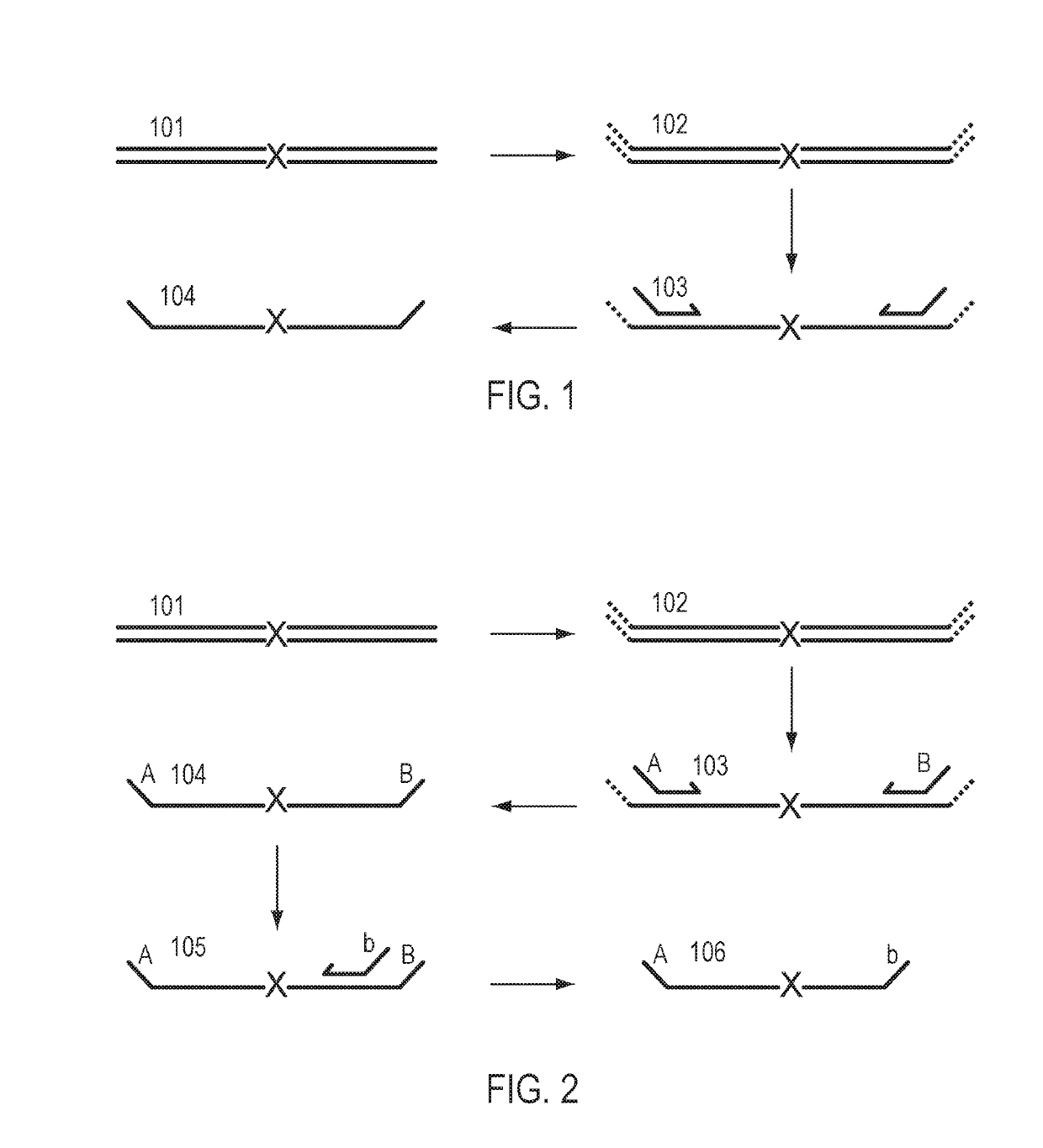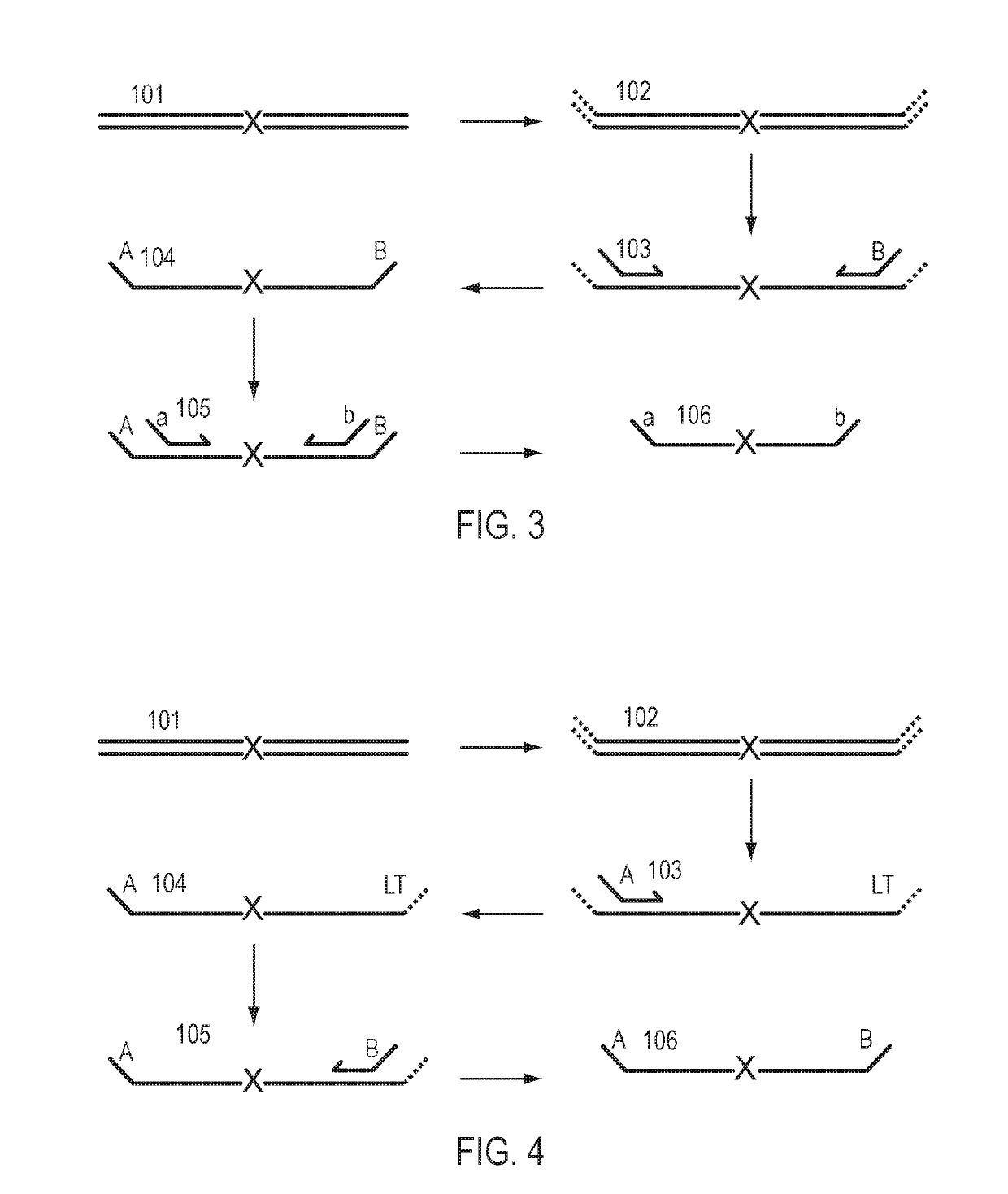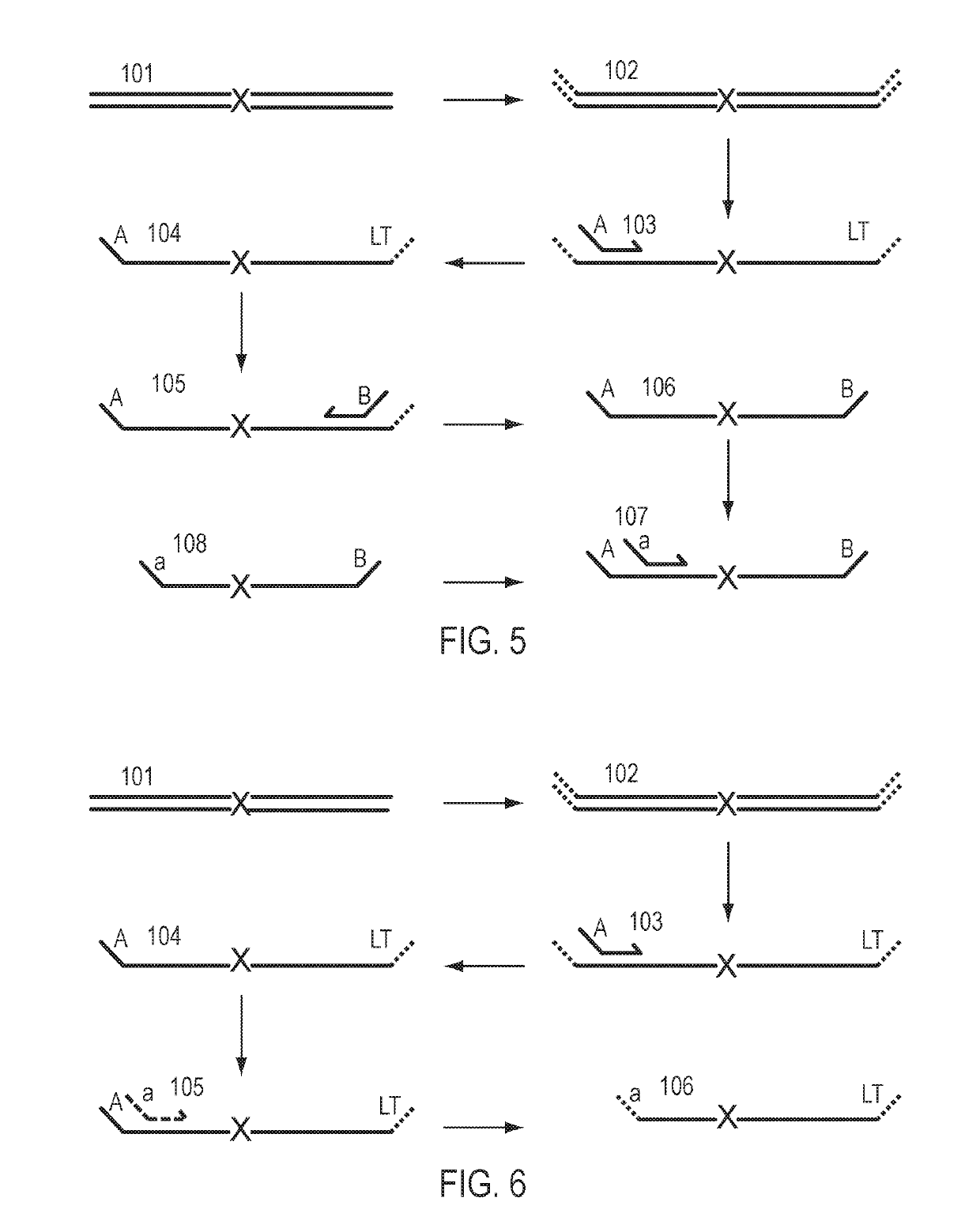Methods for simultaneous amplification of target loci
a target locus and target technology, applied in the field of simultaneous amplification of target loci, can solve the problems of increasing the risk of generating such products, limiting the use of amplified products for further analysis and/or assays, and generating non-target amplification products, so as to increase the accuracy of the method and reduce the number of different pools
- Summary
- Abstract
- Description
- Claims
- Application Information
AI Technical Summary
Benefits of technology
Problems solved by technology
Method used
Image
Examples
example 1
[0795]The objective was to show that a Bayesian maximum likelihood estimation (MLE) algorithm that uses parent genotypes to calculate fetal fraction improves accuracy of non-invasive prenatal trisomy diagnosis compared to published methods.
[0796]Simulated sequencing data for maternal cfDNA was created by sampling reads obtained on trisomy-21 and respective mother cell lines. The rate of correct disomy and trisomy calls were determined from 500 simulations at various fetal fractions for a published method (Chiu et al. BMJ 2011; 342:c7401) and our MLE-based algorithm. We validated the simulations by obtaining 5 million shotgun reads from four pregnant mothers and respective fathers collected under an IRB-approved protocol. Parental genotypes were obtained on a 290K SNP array. (See FIG. 14)
[0797]In simulations, the MLE-based approach achieved 99.0% accuracy for fetal fractions as low as 9% and reported confidences that corresponded well to overall accuracy. We validated these results u...
example 2
[0799]The objective was to improve non-invasive detection of fetal trisomy 18, 21, and X particularly in samples consisting of low fetal fraction by using a targeted sequencing approach combined with parent genotypes and Hapmap data in a Bayesian Maximum Likelihood Estimation (MLE) algorithm.
[0800]Maternal samples from four euploid and two trisomy-positive pregnancies and respective paternal samples were obtained under an IRB-approved protocol from patients where fetal karyotype was known. Maternal cfDNA was extracted from plasma and roughly 10 million sequence reads were obtained following preferential enrichment that targeted specific SNPs. Parent samples were similarly sequenced to obtain genotypes.
[0801]The described algorithm correctly called chromosome 18 and 21 disomy for all euploid samples and normal chromosomes of aneuploid samples. Trisomy 18 and 21 calls were correct, as were chromosome X copy numbers in male and female fetuses. The confidence produced by the algorithm w...
example 3
[0803]The objective was to determine if trisomy is detectable with high confidence on a triploid fetus, using novel informatics to analyze SNP loci of free floating fetal DNA in maternal plasma.
[0804]20 mL of blood was drawn from a pregnant patient following abnormal ultrasound. After centrifugation, maternal DNA was extracted from the buffy coat (DNEASY, QIAGEN); cell-free DNA was extracted from plasma (QIAAMP QIAGEN). Targeted sequencing was applied to SNP loci on chromosomes 2, 21, and X in both DNA samples. Maximum-Likelihood Bayesian estimation selected the most likely hypothesis from the set of all possible ploidy states. The method determines fetal DNA fraction, ploidy state and explicit confidences in the ploidy determination. No assumptions are made about the ploidy of a reference chromosome. The diagnostic uses a test statistic that is independent of sequence read counts, which is the recent state of the art.
[0805]The instant method accurately diagnosed trisomy of chromoso...
PUM
 Login to View More
Login to View More Abstract
Description
Claims
Application Information
 Login to View More
Login to View More - R&D
- Intellectual Property
- Life Sciences
- Materials
- Tech Scout
- Unparalleled Data Quality
- Higher Quality Content
- 60% Fewer Hallucinations
Browse by: Latest US Patents, China's latest patents, Technical Efficacy Thesaurus, Application Domain, Technology Topic, Popular Technical Reports.
© 2025 PatSnap. All rights reserved.Legal|Privacy policy|Modern Slavery Act Transparency Statement|Sitemap|About US| Contact US: help@patsnap.com



